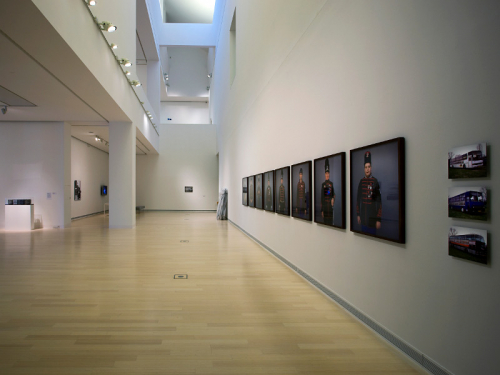Tibor Hajas’ collaboration after 1976 with photographer János Vető, who was practically the only one to document his performances, marked a new period in his oeuvre. In the second half of the 70s, Hajas was engrossed in scrutinizing oriental sacred texts that were accessible in Hungary; Tibetan Buddhist cosmology became a major inspiration and source for his works. His performances reflecting the Buddhist conception of the cyclical transmigration of the spirit through life and death can be classified in two groups: in addition to his artistic experiments, the purpose of which was making tableaux like Tumo I. and which were only seen by a select few, he started doing performances before a broader public as well. The photographs revealing his private process of coping with the death experience record the series of performances from the summer of 1978 until his unexpected death two years later. Hajas created Tumo I. using a specific number of prints of specific formats out of the hundreds of photographs recording the events that almost exclusively took place with the participation of the photographer. The piece – together with its couple, Tumo II. – is one of Hajas’ last tableaux. Even on international scale, they are outstanding, rare examples of pushing the exploration of the body’s physical limits to extremes, of his consistent, conceptual, and even textual artistic research.

